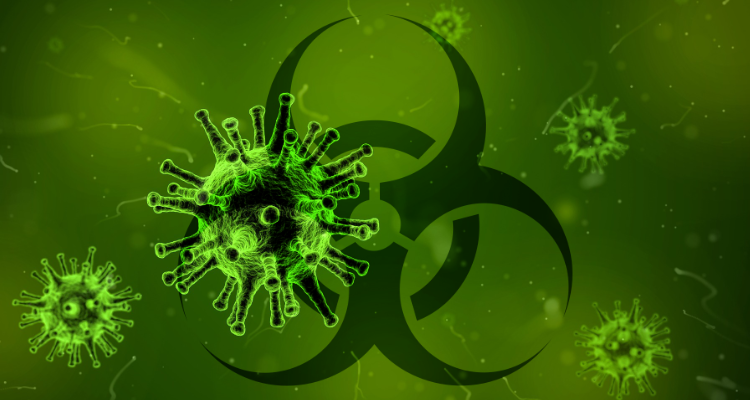As per ILO definition of Biological Agents, Biological agents can be defined as any micro-organism, cell culture, or human endoparasite, which may cause any infection, allergy, toxicity or otherwise create a hazard to human health. These include viruses and bacteria which can cause infection and disease, dangerous plants and animals (for example parasites or insects), biologically contaminated dusts, or wastes from humans and animals.
Special Properties of Biological Agents
Biological agents are living organisms and have a range of properties that differentiate them and their effects from chemical substances. These include:
- Rapid mutation
- Incubation periods
- They are infections
- Rapid multiplication
Rapid mutation
Viruses in particular are capable of mutating from one variant to another with astonishing speed, which makes detection and treatment of viral infections difficult. Many viruses have short generation times and relatively high mutation rates, which when combined with natural selection, allows viruses to quickly adapt to environmental changes.
Many recent disease outbreaks such as bird flu and SARS have occurred as a result of viral mutations.
Incubation period
The incubation period is the time between catching an infection and the onset of symptoms. Incubation periods vary, depending on the type of infection. The period may be as short as minutes to as long as thirty years in the case of CJD (variant Creutzfeldt–Jakob disease). The latent period is the time from infection to infectiousness. Which is shorter depends on the disease.
Infectious
The term ‘infection’ relates to the growth of an unwanted parasitic organism within the body. This therefore excludes the presence of ‘friendly’ bacteria that commonly exist in the gut, for example.
The term ‘infectious’ indicates the comparative ease with which the disease is transmitted to other hosts. The infectious period is not necessarily the same as the incubation period. With some infections, such as chickenpox, the person may be infectious before symptoms start to show.
Individuals who are asymptomatic (have no symptoms) may be infective, and therefore able pass on the infection to others. Even after symptoms have finally subsided an individual may still be infective for some weeks.
The ‘infectious dose’ is the amount of pathogen (measured in numbers of organisms) required to cause infection in the host. The process of infection can be represented as a chain; breaking a link in the chain at any point will control the risk of infection.
Rapid multiplication
The probability of a biological agent actually causing ill-health is related to the infectious dose. This is either a function of the colony size (numbers of bacteria) or the amount of toxin produced (more bacteria = more toxins).
All microorganisms are capable of rapid multiplication. Bacterial multiplication occurs by binary fission, i.e. one cell splits into two daughter cells – 1 – 2 – 4 – 8 – 16 – 32 – 64 etc., so growth is exponential. With such a high growth rate it will not take long before sufficient numbers of bacteria are available to cause infection.
There are a number of factors that provide (or remove) optimal conditions for multiplication. These include:
- Availability of nutrients;
- Oxygen levels;
- Water;
- Temperature;
- pH;
- Availability of light.
If these factors are known for a particular organism then controls can be put in place to prevent or promote its growth as appropriate. For example, the growth and proliferation of Legionella bacteria can be controlled by careful management of water storage temperature, water pH and the availability of nutrients etc.
In the last few study units, we have examined an important group of hazardous substances. We now move on to a different category of occupational health hazard, biological agents.
These are, in the main, naturally-occurring materials that are encountered in the workplace, possibly through health care work and associated laboratory activities, or during the handling or processing of animal or plant-derived materials.
However, the key issue is that these biologically-derived materials and associated micro-organisms have the potential to cause occupational ill-health and disease and therefore exposure to them must be controlled.
In this element, we begin our examination of biological agents by reviewing the various types of agent and the health effects that arise from exposure. We then move on to consider the occupational situations where exposure might occur, reviewing specific groups of workers at risk and also particular workplace ill-health conditions caused by biological agents.


One thought on “All about Biological Agents”